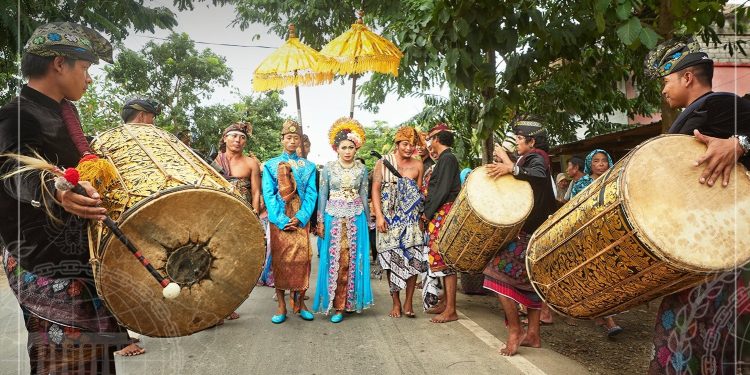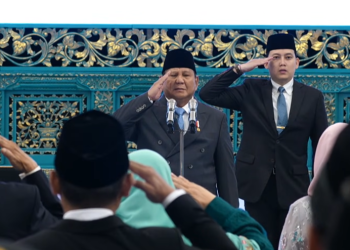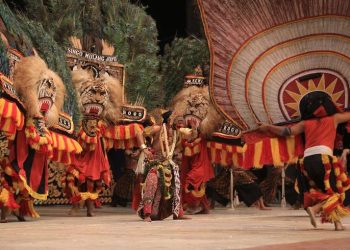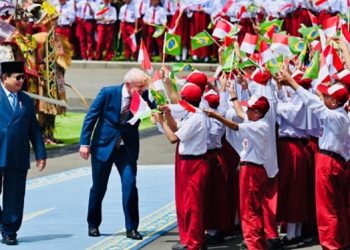Jakarta, Indonesia Sentinel — Indonesia is a country rich in culture, with diverse traditions that shape its communities, among these is Merarik traditions. This centuries-old wedding tradition is carried out by the Sasak people in Lombok, West Nusa Tenggara, where the groom “kidnap” the bride before their wedding ceremony.
The Merarik tradition, commonly referred to as “bride kidnapping”, is widely recognized among the Sasak people. The term “Merarik” originates from the Sasak language, where it means “to run away.” In the context of marriage, it refers to a man secretly taking a woman to be his wife.
While “Merarik” is the most commonly used term, some Sasak communities also refer to the practice as Merarinang, which similarly means “to elope.” Variations in pronunciation and terminology exist across different regions of Lombok, but the underlying custom remains the same.
The Origins of Merarik
According to Kompas, the origins of Merarik remain a topic of debate among historians and cultural experts. Some believe that Merarik predates the 18th-century Balinese rule over Lombok, making it an original practice of the Sasak people.
While others argue that the tradition is a result of cultural assimilation during the nearly 100-year period when Lombok was under Balinese control. Regardless of its origins, Merarik has been passed down through generations and remains an integral part of Sasak marriage customs.
Merarik Tradition Process
Merarik, or the so-called “bride kidnapping” tradition, is a key part of the Sasak ethnic group’s wedding rituals in Lombok, Indonesia, as the bride kidnapping marks the beginning of the marriage process.
During the Merarik traditions, there are several steps and process that complete its traditions.
- Midang
Before the bride is taken away, both the groom and bride-to-be usually agree in advance on the exact time and date for the ritual. This arrangement remains a closely guarded secret between the couple.
This initial stage of the tradition is known as Midang, a courtship phase where the groom visits the bride’s home, often on a Thursday or Saturday night.
However, under customary law, Merarik is prohibited from taking place during certain nighttime hours, and violators may face traditional sanctions.
- Merarik
The next step, known as Merarik, involves the groom discreetly kidnap the bride from her home and bringing her to his family’s residence.
-
Selabar and Majetik
Once the bride has been taken, the process moves to the third stage, Selabar and Majetik. In this process the groom’s family formally notifies the bride’s family about the marriage.
At this stage, discussions begin to determine the next steps of the wedding ceremony. It is including the marriage vows, Sorong Serah (formal handover of the bride), and Nyongkolan (a celebratory procession).
- Mbait Wali
The fourth stage is Mbait Wali, involves escorting the bride’s guardian to officiate the marriage during the marriage vows ceremony.
- Sorong Serah
In the fifth stage, Sorong Serah or a formal handover of the bride. Upon completing this stage, the bride is officially handed over to the groom’s family in a symbolic gesture of unity.
- Nyongkolan
Merarik concludes with Nyongkolan, a grand procession in which the groom’s family escorts the bride to her new home. The Nyongkolan typically accompanied by traditional music and cultural festivities.
Read Also:
Seeking Forgiveness in Bali: The Deep Meaning of the Guru Piduka Ceremony
Merarik Traditions
Merarik traditions has long been an essential part of Sasak culture. Today, it is largely a symbolic practice where the so-called “kidnapping” is consensual and planned in advance by both families. Despite evolving societal norms, Merarik remains a deeply rooted tradition, reflecting the cultural identity of the Sasak people and their unique approach to marriage.
(Raidi/Agung)

























